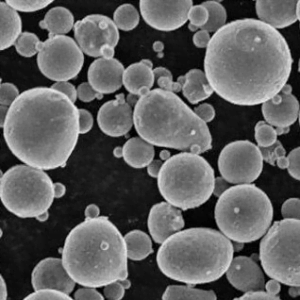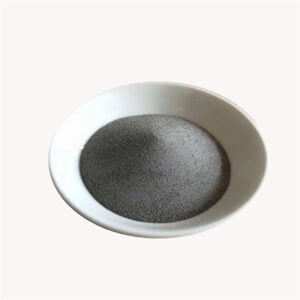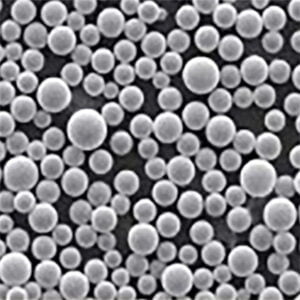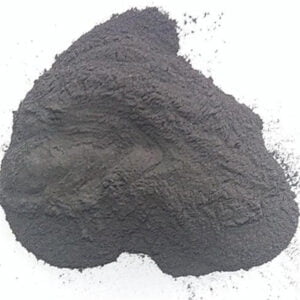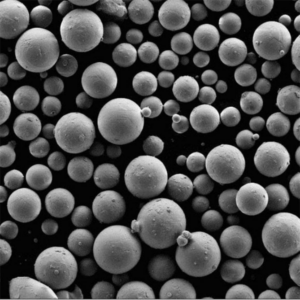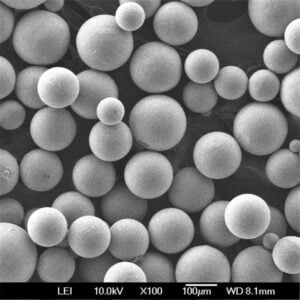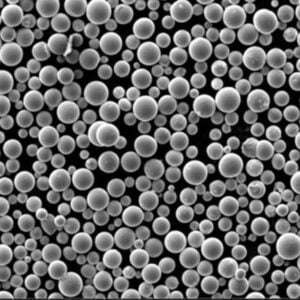
Invar 36 Powder: The Complete Guide for 2025
Low MOQ
Provide low minimum order quantity to meet different needs.
OEM & ODM
Provide customized products and design services to meet unique customer needs.
Adequate Stock
Ensure fast order processing and provide reliable and efficient service.
Customer Satisfaction
Provide high quality products with customer satisfaction at the core.
share this article
Table of Contents
Overview
Invar 36 powder is a nickel-iron alloy (Fe-36% Ni) known for its exceptionally low thermal expansion coefficient, making it an ideal material for applications requiring dimensional stability under temperature fluctuations. It is widely used in aerospace, precision instruments, electronics, and additive manufacturing (3D printing).
In this guide, we’ll explore:
- Best Invar 36 powder for 3D printing
- Choosing the right Invar 36 powder
- Top suppliers of Invar 36 powder
- Properties and industrial applications
- Production methods and cost analysis
- Comparing gas atomized vs. water atomized Invar 36 powder
Best Invar 36 Powder for 3D Printing in 2025
Why Invar 36 Powder is Ideal for Additive Manufacturing?
- Near-zero thermal expansion, crucial for precision components
- Excellent weldability & printability in LPBF & DED
- High dimensional stability, reducing distortion risk
- Good mechanical strength & corrosion resistance
Key Factors for Selecting Invar 36 Powder for 3D Printing
- High sphericity for better flowability
- Controlled particle size distribution for consistent layer formation
- Low oxygen & impurity levels to prevent defects
- Superior mechanical properties post-processing
Comparison for Different 3D Printing Technologies
| 3D Printing Technology | Recommended Invar 36 Powder | Advantages | Challenges |
|---|---|---|---|
| Laser Powder Bed Fusion (LPBF) | Gas-atomized spherical powder (15-45µm) | High accuracy, fine details | Requires optimized laser settings |
| Electron Beam Melting (EBM) | Gas-atomized powder (45-105µm) | Low residual stress | Limited material availability |
| Direct Energy Deposition (DED) | Gas-atomized powder (50-150µm) | Large-scale part production | Requires post-processing |
| Binder Jetting | Irregular or spherical powder (30-80µm) | High-speed production | Requires sintering & infiltration |
For high-performance industrial applications, Met3DP’s gas-atomized Invar 36 powder is the preferred choice. Learn more about Met3DP’s high-quality metal powders.
How to Choose the Right Invar 36 Powder
Selecting the ideal Invar 36 powder requires considering factors such as particle size distribution, powder morphology, atomization process, and application requirements.
1. Particle Size Distribution (PSD)
- Fine powders (15-45µm) → Best for Laser Powder Bed Fusion (LPBF)
- Medium powders (45-105µm) → Suitable for EBM & Binder Jetting
- Coarse powders (50-150µm) → Used in Direct Energy Deposition (DED)
2. Powder Morphology
- Spherical Powder → Best for 3D printing due to superior flowability
- Irregular Powder → Suitable for Binder Jetting & Sintering
3. Atomization Process
- Gas-Atomized Powder → High purity, excellent flowability, best for 3D printing
- Water-Atomized Powder → More affordable, irregular shape, best for sintering & MIM
Comparison of Different Types
| Factor | Gas Atomized | Water Atomized |
|---|---|---|
| Sphericity | High | Low |
| Purity | High | Medium |
| Flowability | Excellent | Moderate |
| Cost | Medium | Low |
| Best for | 3D Printing, Aerospace | MIM, Sintering |
For high-precision 3D printing, Met3DP’s gas-atomized Invar 36 powder is the best choice. Contact Met3DP for more details.
Related Products
Top Suppliers in 2025
Several global manufacturers produce high-quality Invar 36 powder, but not all powders meet the stringent additive manufacturing requirements.
Leading Suppliers and Their Offerings
| Supplier | Location | Powder Type | Specialization |
|---|---|---|---|
| Met3DP | China | Gas-atomized Invar 36 | High-performance AM powders |
| Höganäs | Sweden | Water-atomized | Sintering & MIM applications |
| Carpenter Additive | USA | Gas-atomized | Aerospace & defense |
| Sandvik | Sweden | Gas-atomized | Tooling & industrial applications |
| AMETEK | USA | Plasma-atomized | High-purity applications |
Among these, Met3DP stands out due to its cutting-edge atomization technology and consistent powder quality. Explore Met3DP’s Invar 36 product range.
Properties
Key Physical and Chemical Properties
| Property | Value |
|---|---|
| Composition | Fe-36Ni |
| Density | 8.1 g/cm³ |
| Melting Point | 1430°C |
| Thermal Expansion Coefficient | 1.2 × 10⁻⁶ /°C |
| Ultimate Tensile Strength | 600 MPa |
| Yield Strength | 280 MPa |
| Elongation | 35% |
These outstanding properties make it the material of choice for precision instruments, aerospace structural parts, and cryogenic applications.
Production Methods
The production method of Invar 36 powder significantly influences its particle shape, purity, flowability, and performance in applications like 3D printing, metal injection molding (MIM), and sintering.
Main Production Methods
| Production Method | Particle Shape | Purity | Best Applications | Cost |
|---|---|---|---|---|
| Gas Atomization | Spherical | High | 3D Printing, Aerospace, Electronics | Medium |
| Water Atomization | Irregular | Medium | MIM, Sintering, Coatings | Low |
| Plasma Rotating Electrode Process (PREP) | Highly Spherical | Very High | High-end AM, Aerospace, Medical | High |
1. Gas Atomization
How It Works:
- High-pressure inert gas (argon or nitrogen) rapidly cools molten Invar 36, forming fine spherical particles.
Advantages:
✔ High sphericity, making it ideal for 3D printing
✔ Low oxygen content, reducing oxidation risks
✔ Consistent particle size distribution, improving packing density
Best for: LPBF, DED, and EBM 3D printing
2. Water Atomization
How It Works:
- High-pressure water jets break molten Invar 36 into fine particles, resulting in irregular-shaped powders.
Advantages:
✔ Lower cost than gas-atomized powders
✔ Higher surface area, making it suitable for sintering and MIM
Disadvantages:
✖ Poor flowability for additive manufacturing
✖ Higher oxygen content, which may require additional processing
Best for: MIM, sintering, and thermal spray coatings
3. Plasma Rotating Electrode Process (PREP)
How It Works:
- A rotating Invar 36 electrode is melted in a plasma environment, forming highly spherical, ultra-pure powders.
Advantages:
✔ Perfect spherical shape, excellent for high-end AM
✔ Ultra-high purity, suitable for aerospace and medical applications
✔ Superior flowability
Disadvantages:
✖ Expensive
✖ Limited production volume
Best for: Aerospace, optical systems, and precision engineering
For high-performance 3D printing applications, Met3DP’s gas-atomized Invar 36 powder is the top choice. Explore Met3DP’s powder production solutions.
Cost Analysis
Several factors influence the cost of it, including production method, particle shape, purity, and market demand.
Factors Affecting Cost
- Production Method – PREP powders are the most expensive, while water-atomized powders are the most affordable.
- Particle Shape – Spherical powders (better for AM) are more expensive than irregular powders.
- Purity Level – Higher purity = Higher cost.
- Market Demand – Increased demand from aerospace, electronics, and optical industries can impact pricing.
Estimated Price Ranges for Different Types
| Powder Type | Price (USD/kg) | Best For |
|---|---|---|
| Gas-Atomized Invar 36 Powder | 80−80 – 80−150 | 3D Printing, Aerospace |
| Water-Atomized Invar 36 Powder | 40−40 – 40−90 | MIM, Sintering |
| PREP Invar 36 Powder | 250−250 – 250−350 | High-Performance Applications |
For cost-effective, high-quality Invar 36 powder, Met3DP provides optimized solutions tailored to industry needs. Contact Met3DP for pricing and availability.
Gas Atomized vs. Water Atomized vs. PREP: Which is Better?
Choosing the right Invar 36 powder depends on your application requirements.
Comparison of Different Atomization Methods
| Feature | Gas Atomized | Water Atomized | PREP |
|---|---|---|---|
| Particle Shape | Spherical | Irregular | Highly Spherical |
| Flowability | Excellent | Moderate | Outstanding |
| Purity | High | Medium | Very High |
| Cost | Medium | Low | High |
| Best For | 3D Printing, Aerospace | MIM, Sintering | High-End Applications |
For additive manufacturing, gas-atomized Invar 36 powder is the best option, offering high purity, flowability, and printability.
FAQ
Q1: What is the best Invar 36 powder for 3D printing?
Gas-atomized spherical Invar 36 powder is best for LPBF, EBM, and DED due to its excellent flowability and low oxygen content.
Q2: What makes Invar 36 unique?
Its low thermal expansion coefficient makes it ideal for applications requiring dimensional stability, such as optical systems and aerospace components.
Q3: Can Invar 36 be used for metal injection molding (MIM)?
Yes, water-atomized Invar 36 powder is commonly used in MIM and sintering.
Q4: Where can I buy high-quality Invar 36 powder?
Met3DP is a leading supplier of gas-atomized Invar 36 powder, optimized for 3D printing and high-performance applications. Contact Met3DP today!
Conclusion
It is a specialized material ideal for precision applications, including aerospace, optics, electronics, and 3D printing. Selecting the right powder type, production method, and supplier is essential for ensuring optimal performance and reliability.
Why Choose Met3DP’s Invar 36 Powder?
✅ Industry-leading gas atomization technology
✅ High-purity spherical powders for additive manufacturing
✅ Reliable supply chain & global distribution
For high-performance Invar 36 powder, Met3DP provides cutting-edge solutions tailored to demanding applications.
Want to learn more or get a quote? Contact Met3DP today!
Get Latest Price
About Met3DP
Product Category
HOT SALE
CONTACT US
Any questions? Send us message now! We’ll serve your request with a whole team after receiving your message.

Metal Powders for 3D Printing and Additive Manufacturing
COMPANY
PRODUCT
cONTACT INFO
- Qingdao City, Shandong, China
- [email protected]
- [email protected]
- +86 19116340731






